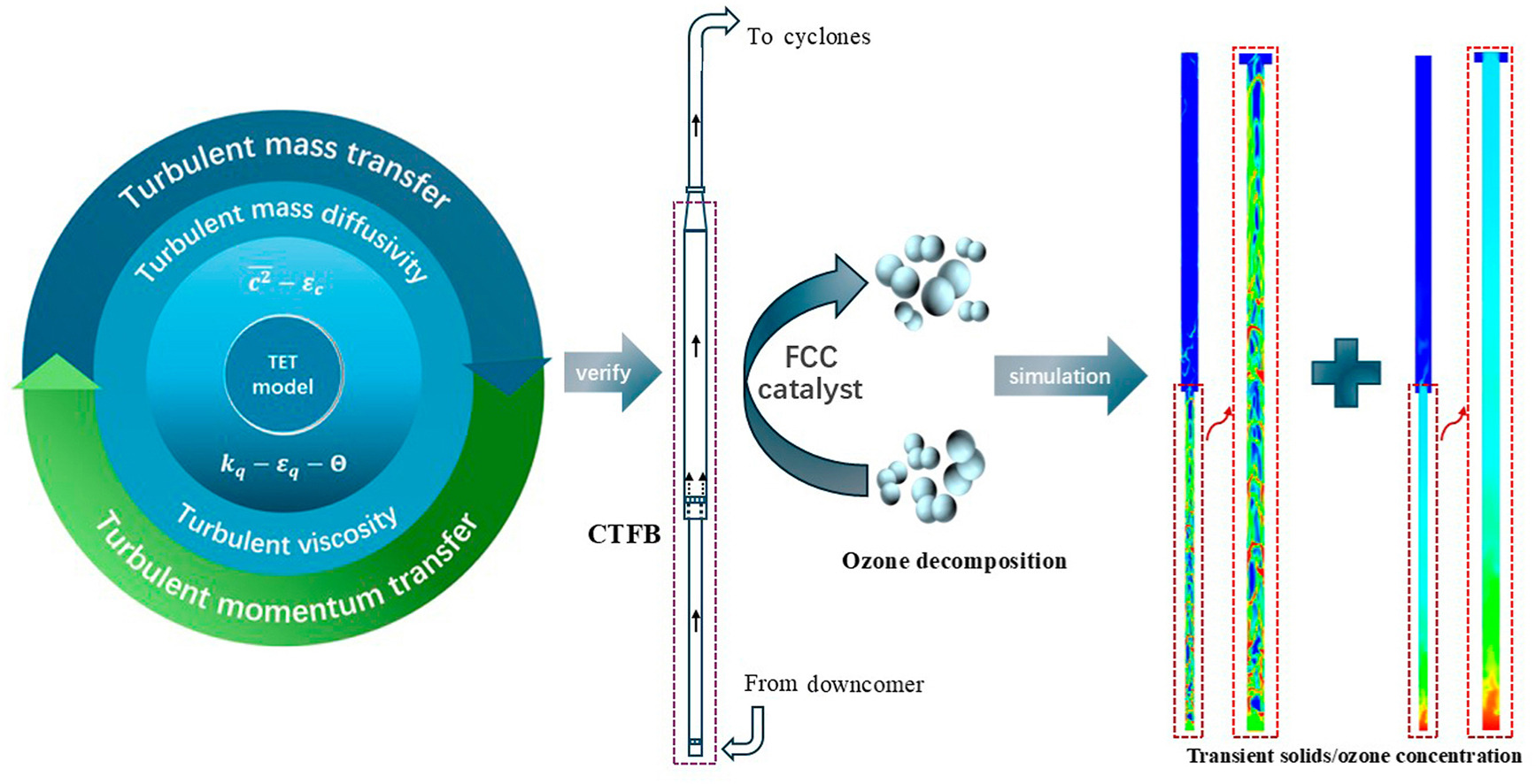• A turbulent mass transfer model for simulation of CTFB is established.
• The model is validated by comparing predictions against experimental data.
• Influences of meso-structure and turbulence on CTFB performance are investigated.
• Advantages of CTFB both in hydrodynamics and mass transfer process are found.
The circulating turbulent fluidization and circulating turbulent fluidized bed (CTFB) have been proposed over the past two decades. It is believed that CTFB can overcome the disadvantages encountered in circulating fluidized bed (CFB) and turbulent fluidized bed (TFB), while combining their advantages, such as high solids circulation rates and high solids holdup. These characteristics are particularly favorable for reactions requiring continuous particle withdrawal and addition. However, accurate modeling and simulation of CTFB with reactive flow remain challenges primarily due to difficulties in capturing intrinsic meso-structures and the turbulent effects. In this study, a turbulent mass transfer model, namely the two-equation turbulent (TET) model, is proposed for the simulation of CTFB. The TET model integrates the energy minimization multiscale (EMMS)-based drag, the 𝑘 approach and the recently developed formulations to rigorously account for meso-structure and turbulent effects. With this model, the species concentration, phase temperature and velocity as well as solids volume fraction distributions can be obtained simultaneously. Satisfactory agreements between simulated results and experimental data are found (e.g., average absolute relative deviation between a typical simulation by the TET model and experiment on species concentration distributions is about 8.73 %). Such information would be helpful for the design and optimization of a new CTFB system or assessment of an existed one.

